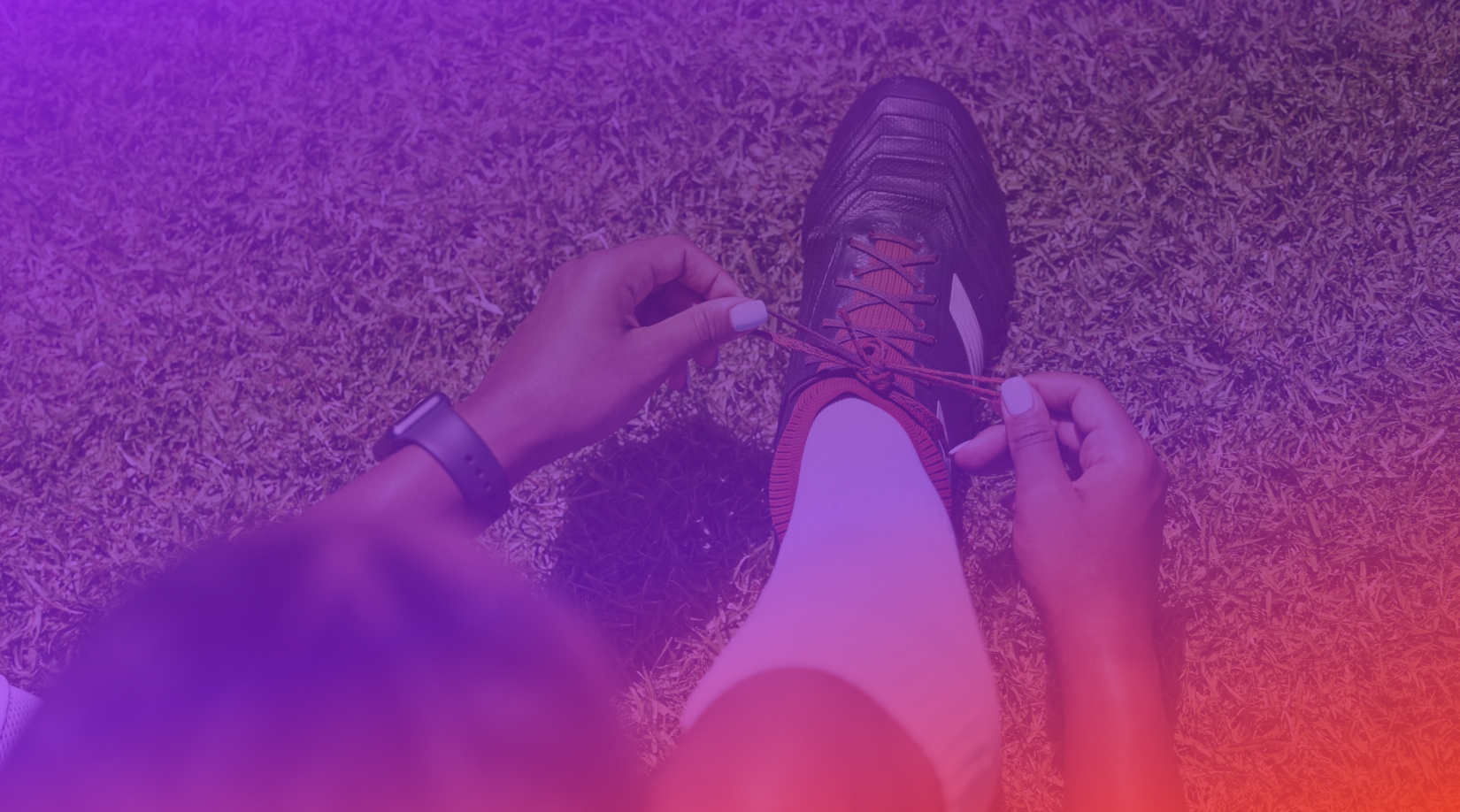Anyone with even a passing interest in Irish sports will recognise the name Katie McCabe. The Republic of Ireland captain and Arsenal star is the face of women’s soccer in Ireland, though her emergence as a public figure has been just one by-product of the game’s rapid rise in popularity on the island in recent years.
Indeed, the Irish women’s national team is now a well-established force on the international scene, and with north of 20 Ireland-eligible players attached to leading clubs in England’s elite Women’s Premier League, further progress is anticipated.
After making it to the World Cup for the first time in 2023, what does the future hold for the Irish women’s team in the Euros and beyond?
History of women’s soccer in Ireland
Soccer has had a deep-rooted hold on Irish sporting culture for generations, and women have played the game in Ireland for just as long. However, they had to wait until the early 1970s for an organised structure for the sport to be formed.
In 1973, the Ladies Football Association of Ireland (LFAI) was established to give shape and form to the women’s game, allowing it to rise from the realm of sporting subculture to a more recognised discipline.
Later in the same year, on 13th May, the Republic of Ireland women’s team took to the field for the first time to play Wales in a friendly encounter. A Paula Gorham hattrick allowed Na cailíní i nglas (The Girls in Green) to win the historic match in style, though success was hard to come by for the underfunded fledgling outfit thereafter.
In 1990, the LFAI moved under the umbrella of Ireland’s governing body for soccer, the FAI, though that development ultimately proved a sideways manoeuvre, with the women’s game still left without the attention it craved at the fringes of the Football Association’s priorities.
Ten years later, in 2000, the LFAI changed its name to the Women’s Football Association of Ireland, though a lack of financing, subpar facilities and an overall lack of recognition combined to limit progress in the early parts of the century.
The growth of the domestic women’s game in Ireland
After the LFAI’s launch in 1973, a domestic women’s league was quickly established with 12 teams originally invited to participate, including sides from famous Irish clubs Finn Harps, Dundalk and Sligo Rovers.
By 1979, interest in the league had waned and the number of competing clubs had dropped from 12 to seven. The competition eventually fizzled out completely before it was relaunched in April 1987.
However, the reintroduced division gained little traction in terms of popularity, and it was abandoned again just three years later in 1989. A further attempt to resurrect a national women’s league failed in 1996, though a decade after that, a significant step was made.
The publication of the ‘Women’s Development Plan’ in 2006 was a major turning point for the sport. A mission statement that put forward a desire to “facilitate the growth of Women’s football at all levels of the game in Ireland” and to “provide clear pathways for players, coaches, referees and administrators wishing to become involved in the game” hinted at a brighter future, and the game’s trajectory has been vertical ever since.
With strategies mapped out and financial support from UEFA adding clout, the Women’s National League (WNL) was formed with seven member clubs in 2011/12, and the competition has gone from strength to strength since.
Alongside the WNL’s success, girl’s and women’s soccer at the grassroots level in Ireland has also seen an explosion in popularity. Indeed, more girls are playing, coaching and officiating in football than ever before.
As former Republic of Ireland women’s national team manager Vera Pauw put it in 2022: “The lifeblood of the game is at Grassroots level with clubs and leagues – that is where the enjoyment of playing football is first experienced and where the development of players starts. It is fantastic to see the progress being made with women’s and girls’ football in Ireland but we need to keep it going.”
The recent success of the Irish women’s national team
Ahead of competing at the FIFA Women’s World Cup for the first time in Ireland’s history in 2023, captain Katie McCabe said: “We don’t just want to create history, we want to leave a legacy.” And the midfielder and her teammates have certainly done that.
Ireland exited the tournament’s group stage in Australia after two defeats and a draw in three matches. However, their performances were sharp enough to allow them to leave with their heads held high and to inspire an entire generation of girls watching back home.
The success of the current trailblazing Irish women’s team has been a major game-changer for the sport in Ireland, and names such as McCabe, Fahey and O’Sullivan are commonly sported on the backs of kids’ jerseys up and down the country on amateur soccer pitches.
McCabe and her fellow Irish internationals have become household names thanks to their superb sporting achievements, and the visibility of the women’s game has been supported by advertising campaigns on billboards, social media and TV.
Ireland’s improvement in the international game picked up speed after the introduction of the Women’s Development Plan in 2006, and success for underage teams at the 2010 UEFA Women’s Under-17 Championship (semis) and the 2010 FIFA U-17 Women’s World Cup (quarters) with players such as Megan Campbell, Denise O’Sullivan and Katie McCabe in tow hinted at a better future.
Ireland’s qualification for last year’s Women’s World Cup was the culmination of years of hard work by an army of dedicated and often unheralded personnel, while the team’s subsequent promotion-winning UEFA Nations League campaign served to reaffirm their progress.
Currently ranked 25th in the world, right next to Scotland, earning qualification for the 2025 Women’s European Championships in Switzerland is the next target for Ireland.
Who are the best Irish women’s soccer players?
The profile of the Republic of Ireland women’s national football team has scaled new heights in recent years, and several of the best Irish players have become just as recognisable as their male counterparts.
Katie McCabe
A globally recognised superstar of the women’s game, Katie McCabe is Ireland’s talismanic captain and poster girl for the sport on the island. The 28-year-old, who is the second-highest scorer of all time for Na cailíní i nglas, plays her club football with Arsenal in the English Super League. The silky left-footer with an eye for the spectacular made her debut for Ireland in 2015.
Aoife Mannion
Born in Solihull in the UK, tigerish defender Aoife Mannion, whose parents are both Irish, declared for Ireland in 2023 and made her debut in the same year against China. Mannion also switched allegiances in controversial fashion in 2021 when she crossed Manchester to join United from rivals City.
Niamh Fahey
An international centurion with 111 caps, 36-year-old defender and Galway native Niamh Fahey has been a mainstay in the Irish setup since making her bow in green back in 2007. A three-time WSL champion, Fahey had successful spells with Arsenal and Chelsea between 2008 and 2017 before joining Liverpool in 2018.
Denise O’Sullivan
Another instantly recognisable figure in Irish women’s football, Denise O’Sullivan has been playing for the Girls in Green since 2011, amassing 109 caps and 21 goals since her first appearance for her country. The 30-year-old has been playing her club football in the US for the most part since 2016 and is currently attached to the North Carolina Courage.
Ireland’s chances of qualifying for the 2025 Women’s Euros
There is a real determination to maintain momentum in the Irish camp following the team’s historic appearance at the Women’s World Cup in Australia last year. However, qualification for the 2025 Women’s Euros in Switzerland already looks like an uphill task.
Ireland share a qualification section in League A, Group A3 with a trio of elite opponents in England, France and Sweden, nations that currently occupy places in the top six positions in FIFA’s latest world rankings for the women’s game.
Eileen Gleeson’s troops have played two and lost two qualifiers, leaving them bottom of the group ahead of what already promises to be a crucial meeting with Sweden on matchday three in Dublin on 31st May.
A 1-0 reverse in France was followed by a 2-0 defeat to England at the Aviva Stadium in early April, though that loss to the Lionesses was a significant event for other reasons.
Indeed, the Irish national broadcaster RTE chose to screen Ireland’s meeting with their English counterparts ahead of a high-profile men’s Champions League clash between Manchester City and Real Madrid, with the latter moved to the company’s online streaming service, RTE News.
Ireland’s return fixture against England on 12th July should garner just as much interest, and the Girls in Green will hope that their dreams of qualification remain alive by the time that the summer test at Norwich City’s Carrow Road rolls around.
The future of Irish women’s soccer beyond the Euros
A failure to qualify for the 2025 Women’s European Championships in Switzerland won’t be a death knell for the Irish setup. However, an even brighter future could be on the horizon for Ireland thanks to a mix of emerging talent and the growth of the game overall.
24-year-old Liverpool striker Leanne Kiernan, who has already collected 31 caps, is expected to spearhead a new Irish collective into the next decade, though the prolific centre-forward will be aided by a supporting cast with serious untapped potential.
19-year-old Reading defender Jessie Stapleton, Blackburn midfielder Tyler Toland (22), Crystal Palace forward Abbie Larkin (18), Man City’s Tara O’Hanlon (19), and teenage Peamount trio Jess Fitzgerald (17), Ellen Dolan (17) and Freya Healy (16) are among those shaping up to lead the next Irish charge.
There are already 40 Irish players plying their trade across the two divisions in England’s Women’s Super League and that figure is likely to increase.
The improvement in structures and massive increase in participation at underage level across the country and in the domestic game in Ireland should ensure that the production line of talent remains consistent.
How to place a bet on the Women’s European Qualifiers with TonyBet
TonyBet offers customers extensive betting markets for women’s football at both club and international level, and punters searching for Women’s European Qualifiers odds are extremely well catered for.
To find markets for women’s football, head to TonyBet’s sportsbook and find the catalogue of available sports in the scrollable left-hand menu.
You can find entries for women’s internationals in the soccer submenu, and selecting your desired competition will populate the right side of the screen with fixtures, markets and odds.
From there, you can select the option from the myriad of choices and markets you want to back
with a click. Enter the amount you want to bet and confirm your wager by hitting the purple button.
Bet on women’s soccer with TonyBet today.




 Simon Winter
Simon Winter 